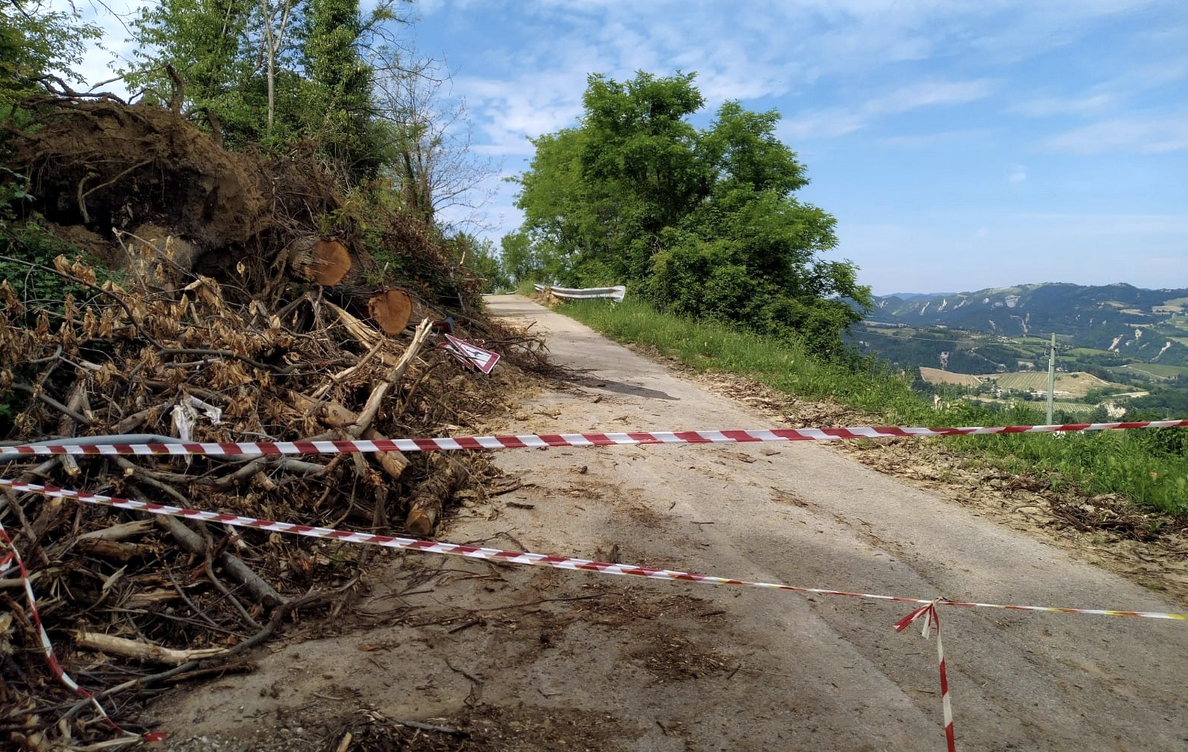On 9 a.m. on 19 May, it was still drizzling in Modigliana, a hillside village in Italy's Tuscan-Romagna Apennines. In the previous days, very heavy rains had caused dozens of landslides, blocking almost all the roads, isolating the town and its 4,300 inhabitants. All communications – landline, cellular, and internet – were knocked out, and the television was only working sporadically. Many locals were without water for more than 24 hours as a result of the damage to the water networks. Across the region, 17 people died.
On 15 May, the mayor, Jader Dardi, had warned citizens of a "red" weather alert, the highest level of precaution. It was the second time in a month. Already in early May, heavy rain had caused landslides and road subsidence. This time the mayor closed the schools, urged all residents not to move from their homes, and advised pet owners to stock up on food and water for the next 48 hours.
The advice was heeded by Vitaliano Massari, a former IBM software developer and for many years an employee of a local electronics company. He lives on a Modigliana farm with his dog Leo, a friendly 9-year-old Drahthaar. By 19 May, four days had passed since the mayor's announcement, and Leo had gone without food for two of them.
Vitaliano, an amateur radio operator, had to make some decisions. In the absence of stable telephone lines, he was communicating via radio with others all over Italy. He had also managed to retrieve from the local fire brigade some TETRA handsets – an emergency radio system used by police forces across Europe – and passed them to the mayor.
That morning, Vitaliano asks by radio if anyone wants to join his mission and walk the 3 km to his farm to save Leo. His friend Don Stefano Rava answers the call.
The two, equipped with radios, run into a river of mud. They have to cut through the woods. After an hour and a half of walking in difficult conditions, Don Stefano decides to call a halt. Vitaliano continues on an increasingly impassable path, and soon finds himself up to his thighs in mud and barely able to move.
Fortunately, Vitaliano has the radio. With the help of a friend, a priest, he manages to alert the rescue services. A group of volunteer firefighters leaves the village, also on foot. When they finally arrive on the spot – thanks partly to the directions of Don Stefano who had remained on the path – Vitaliano has only just managed to extract himself. He had been in the mud for an hour and a half, but was eventually spat out alive, minus his boots. The firefighters take him back to the village, with Leo – they had managed to reach the cottage by building a path across the mud with foliage.
Vitaliano tells me his story over a glass of Sangiovese. It is one of many from the days of heavy floods in May. Simona Carloni, PR manager of the Kara Bobowski cooperative, which cares for around 20 people with disabilities, tells me of worried family members unable to communicate with their loved ones, and staff stranded in neighbouring municipalities. There are the stories of the evacuees (about 200 people) and of those who could no longer reach their homes. Some residents had found that their front doors opened onto a void, their farmyards and gardens having disappeared in the landslide.
The sleepless nights during and after the flood; the roar of water after small streams had turned into torrents and torrents into rivers; the buzz of the helicopters that transported not only people but also small tractors, bulldozers, and animal fodder – these are all recurring themes in the accounts of those who lived through those days.
The flooding in Emilia-Romagna affected both the hilly Apennine areas and the plains. The plains were flooded, with water invading cellars, ground floors and even first floors. In some cases it reached a height of 6 metres, covering houses, fields, and businesses. The hills and mountains, meanwhile, simply disintegrated.
A total of 48 municipalities were affected. The heavy rains caused 23 rivers and streams to overflow, creating huge material damage and displacing more than 23,000 people.
The total damage as estimated by the region amounts to €8.9 billion, of which €1.8 billion is for road repair alone.
Climate change and cementification
The Modigliana disaster is impressive, but it is not isolated. Many areas of Europe have had a mild winter, resulting in welcome low bills despite the high price of gas due to the war in Ukraine and blackmail by Russia. Northern Italy also had a dry winter with very little rain. The years 2017, 2021, and 2022 were among the seven driest of the last 50 years in Emilia-Romagna, with annual rainfall below 700 mm.
The areas with the worst flood damage are also those which have had the worst droughts. In the Forlì-Cesena province in 2021, there was a rainfall deficit of over 380 mm compared to the average for the 1991-2020 period. These prolonged and increasingly frequent dry spells have hardened soils, reducing their capacity to absorb water. Despite this worrying trend, local and national policy has not paid much attention to soil protection.
Stefano Bonaccini, who has presided over the region (for Partito Democratico) for almost ten years, has been widely criticised for the region's continued overdevelopment. On 30 May, flying over the devastated Modigliano hills by helicopter, he hastened to point out to the Italian president, Sergio Mattarella, at his side, how "there is no urbanisation, there is no cement, it's soil. These were places where there were no trees after the Second World War, there has been reforestation".












